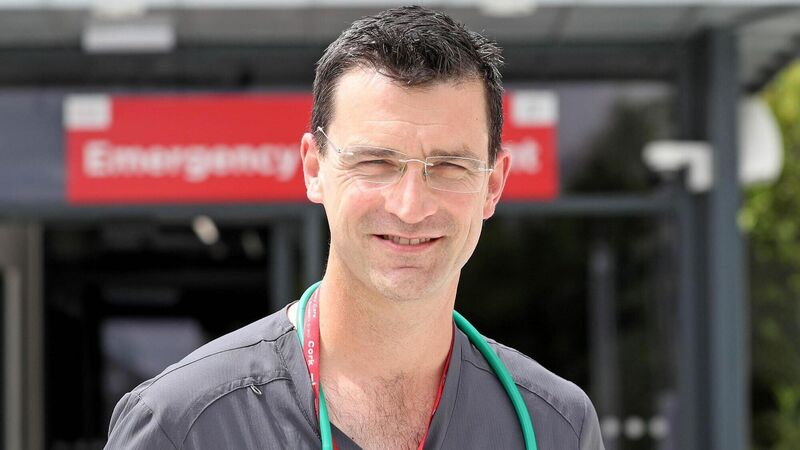708 deaths between 2019 and 2023 at CUH's emergency department

Professor Conor Deasy, Irish Association of Emergency Medicine president, said one issue is gaps in palliative care supports for nursing homes.
More than 5,000 patients died in hospital emergency departments or were dead on arrival in the last five years, including some 1,210 deaths during 2022, new figures show.
The figures indicate that hospitals remain the only option for many families despite commitments to boosting community palliative care.
The data for 26 emergency departments (EDs) show 708 deaths between 2019 and 2023 at Cork University Hospital’s unit, followed by St Vincent’s University Hospital with 479 and St James’ Hospital with 344 deaths.
At University Hospital Limerick, which has been under intense focus surrounding deaths in the ED, those years saw 239 deaths. There were 226 at University Hospital Waterford.
Some 207 people died in the ED at University Hospital Kerry and 133 at the Mercy University Hospital. Figures for Tipperary University Hospital show 73 deaths over those years.
The data was released to the Irish Medical Times under the Freedom of Information Act, published today and shared with the
These numbers increased between 2019 and 2022 but dropped last year to 1,161 deaths. It is understood hospitals do not have a standard protocol for recording deaths so figures may not be directly comparable.
Professor Conor Deasy, Irish Association of Emergency Medicine president, said one issue is gaps in palliative care supports for nursing homes.
“Because nursing homes, at night-time in particular, and out-of-hours, can struggle to get access to primary and palliative care, they will call an ambulance. And that patient is brought into the ED breathing their last, and dies within a few hours,” he said.
“It takes up a lot of resources in the ED that contributes then to the waiting time for other patients. And being shuttled out of your nursing home into the back of an ambulance is not a dignified death.”
Prof Deasy, consultant in emergency medicine at CUH, said the 7% survival rate for patients who are having a cardiac arrest outside of a hospital is another factor.
It can be challenging in hospitals finding a single room, he also told the
“We would prefer patients, if it is looking like they are on a palliative trajectory, to have a single room,” he said.
“Often hospitals don’t have a single room to give to these patients, or you don’t want to move them down a corridor or up the elevator to that single room, for fear of them dying en route."
He added these patients "effectively have their care delivered in the emergency department".
"It’s not as we would like it," he said.
The HSE said the figures come amid rising patient numbers with 1.47m new and return visits last year compared to 1.36m to EDs in 2019.
“Many people who present to the ED do so in their last minutes and hours of life,” a spokesman added.
The figures do not differentiate between patients “expected to die, those who suffered sudden catastrophic medical or surgical conditions, those who were victims of trauma or those who deteriorated unexpectedly in the ED".
Hospital figures may differ due to the type of patient and local supports, he said.
The HSE defended the level of palliative care available saying over 14,000 people receive this at home annually.
Last year 32% of people who had community specialist palliative care were nursing home residents.
He also highlighted the Caru palliative and bereavement training programme in nursing homes which was set up in 2022.
Hospitals are the most common place to die, the National End of Life Survey found.
Some 39.4% of deaths happened in hospitals, followed by 27% in nursing homes, 22% at home and 11% in a hospice.










